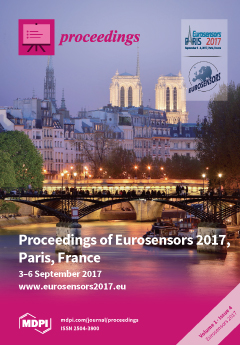Open AccessProceeding Paper
1 Million-Q Optomechanical Microdisk Resonators with Very Large Scale Integration
by
Maxime Hermouet, Louise Banniard, Marc Sansa, Alexandre Fafin, Marc Gely, Sébastien Pauliac, Pierre Brianceau, Jacques-Alexandre Dallery, Pierre Etienne Allain, Eduardo Gil Santos, Ivan Favero, Thomas Alava, Guillaume Jourdan and Sébastien Hentz
Cited by 3 | Viewed by 1779
Abstract
Cavity optomechanics have become a promising route towards the development of ultrasensitive sensors for a wide range of applications including mass, chemical and biological sensing. We demonstrate the potential of Very Large Scale Integration (VLSI) with state-of-the-art low-loss performance silicon optomechanical microdisks for
[...] Read more.
Cavity optomechanics have become a promising route towards the development of ultrasensitive sensors for a wide range of applications including mass, chemical and biological sensing. We demonstrate the potential of Very Large Scale Integration (VLSI) with state-of-the-art low-loss performance silicon optomechanical microdisks for real-world applications. We report microdisks exhibiting optical Whispering Gallery Modes (WGM) with 1 million quality factors. These high-Q microdisks allow their Brownian motion to be resolved at few 100 MHz in ambient air. Such performance shows our VLSI process is a viable approach for the next generation of high-end sensors operating in vacuum, gas or liquid phase.
Full article
►▼
Show Figures



